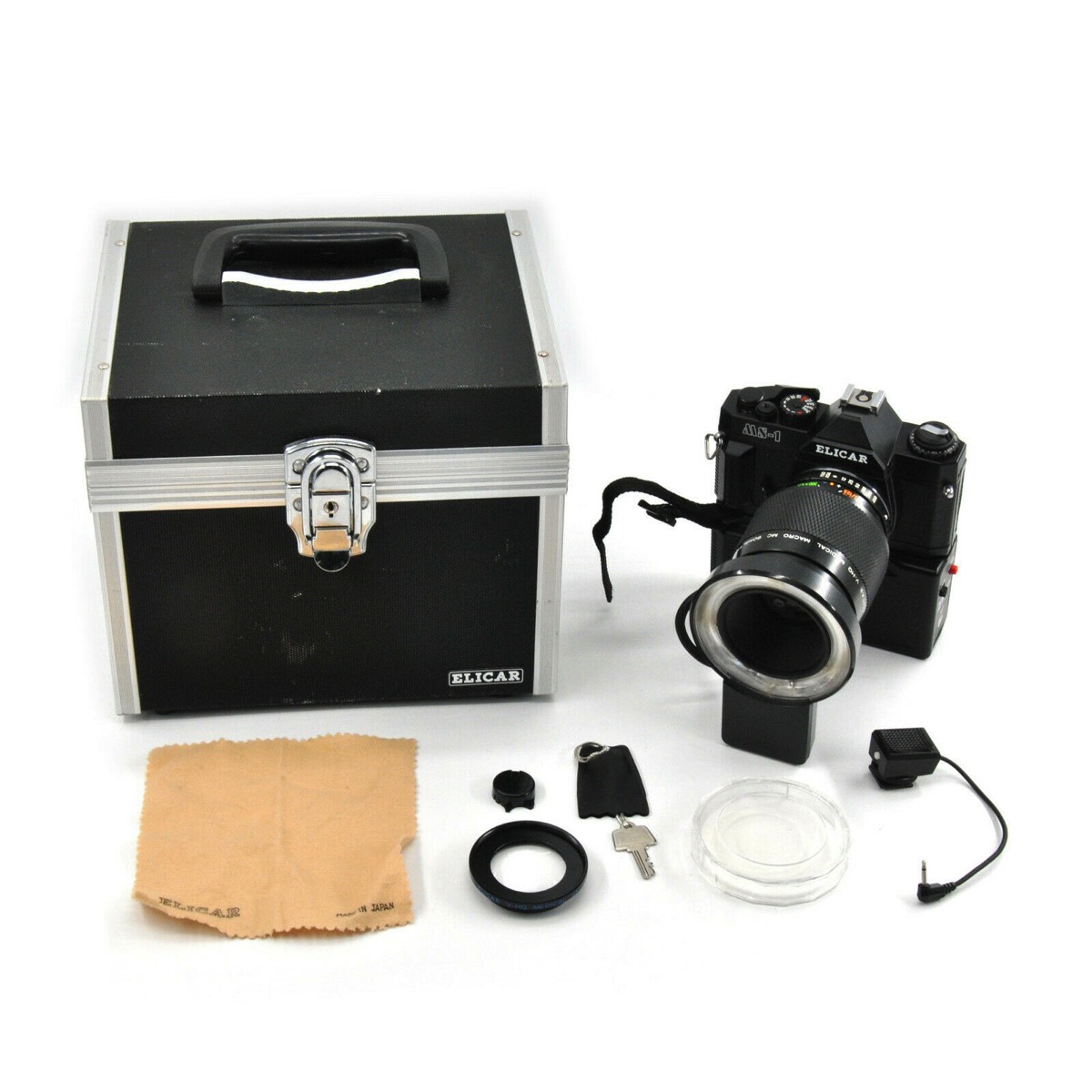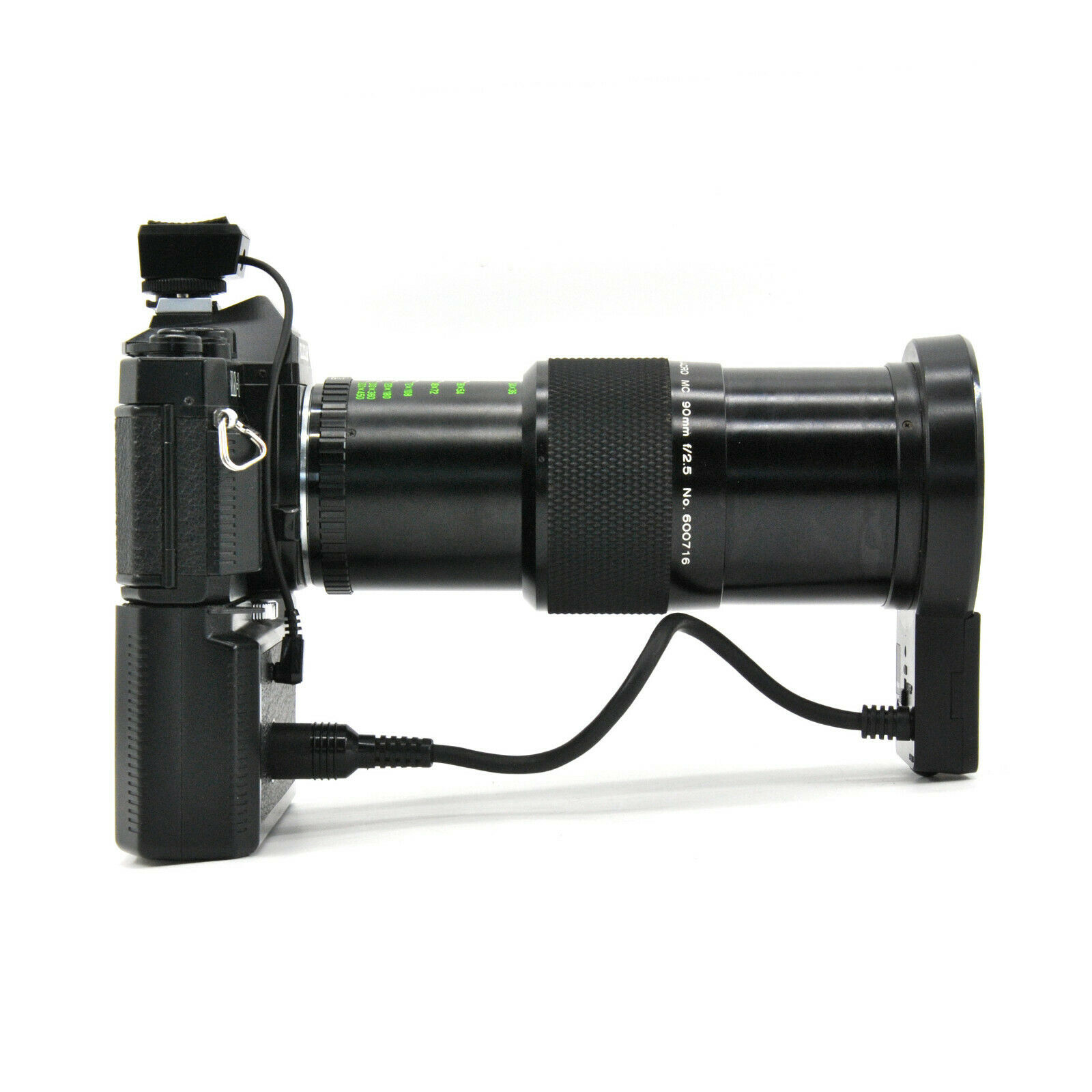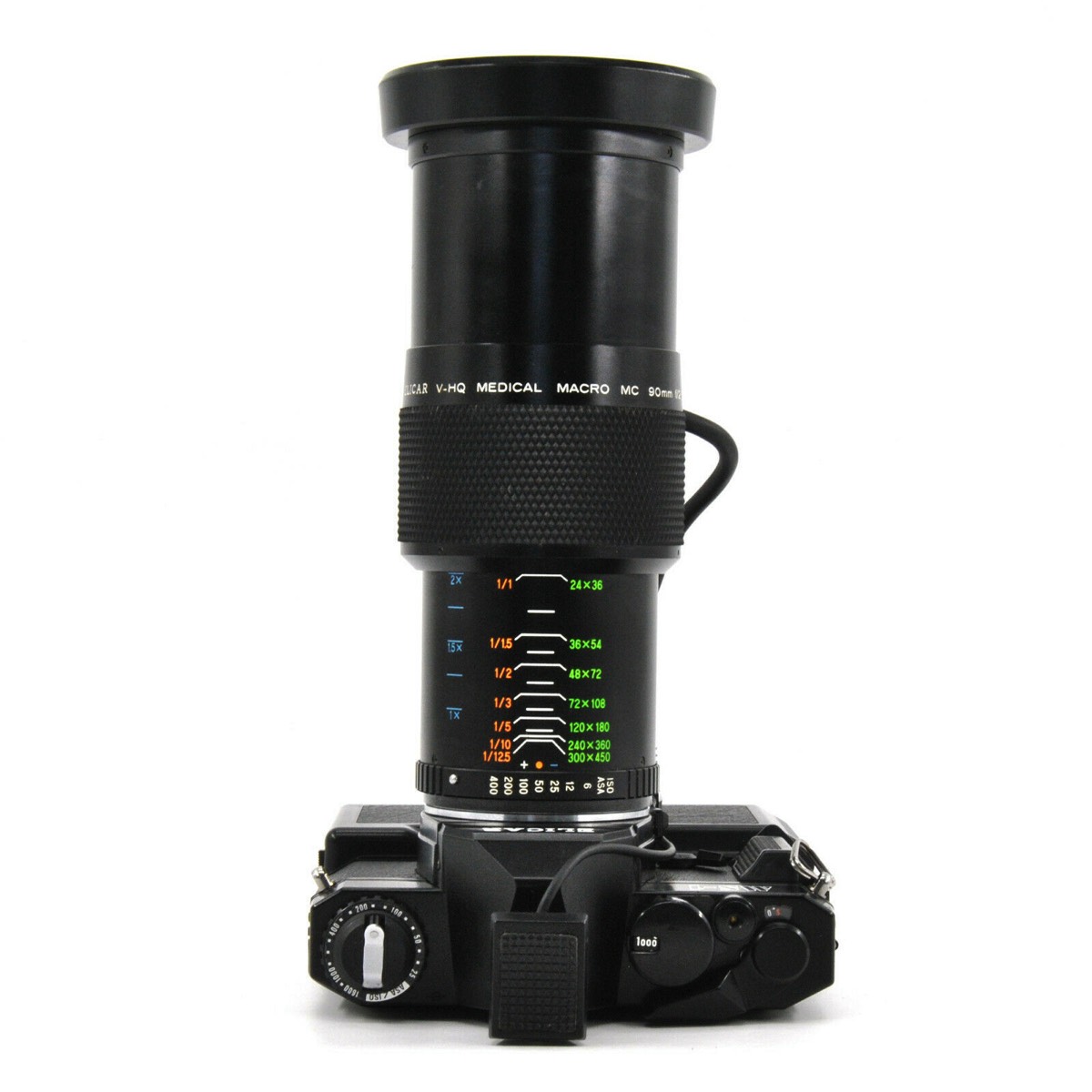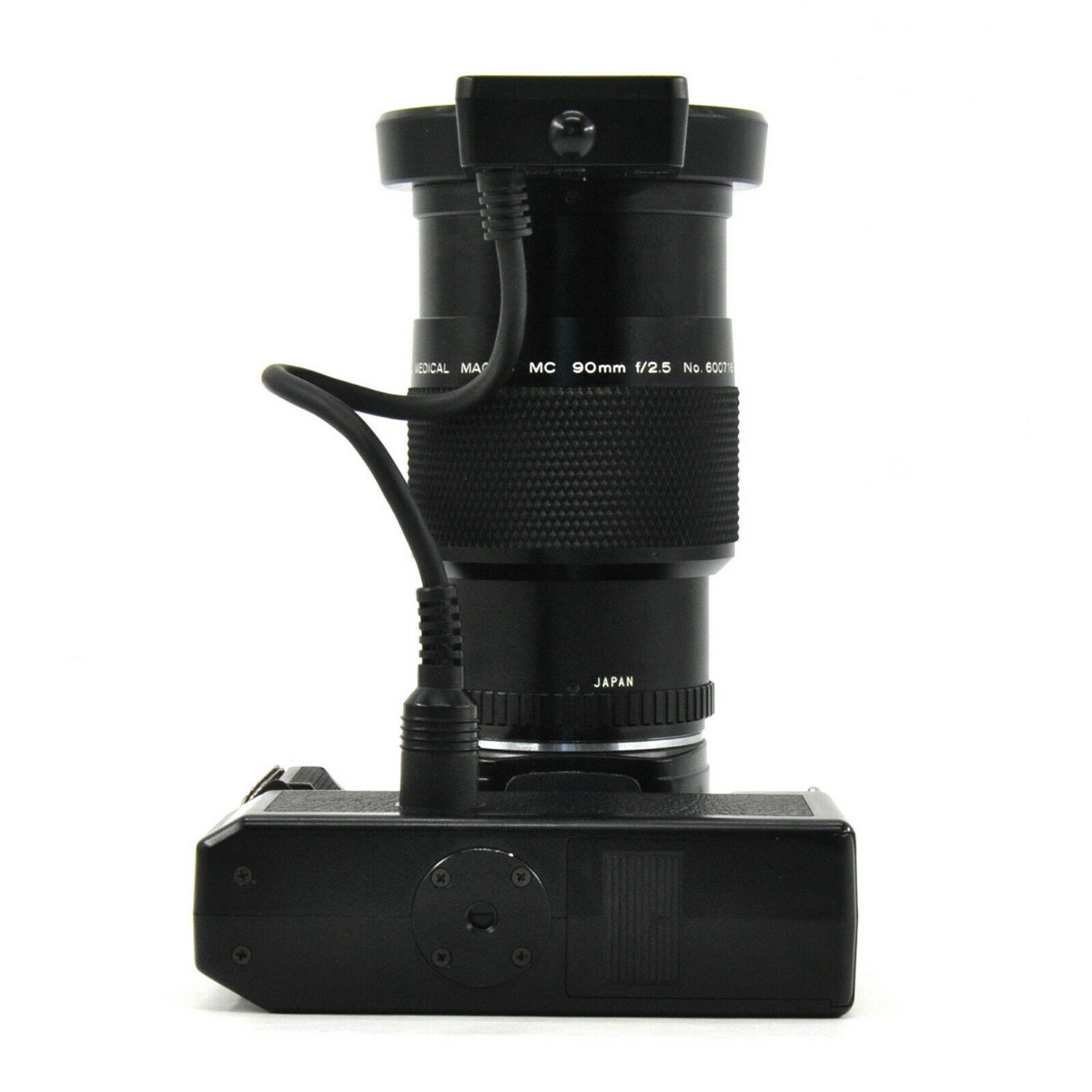This is a legendary macro lens from the 1980’s that was build be highly regarded Japanese firm Komine and branded as the Elicar and Rokunar. This Elicar V-HQ Medical Macro MC 90mm f/2.5, a 1:1 macro, used here is part of the Elicar MS-1 Medical Macro kit (see image above) which consists of an Elicar 35mm K-Mount body, ring flash (the non-removable flash head is integrated with the lens body ), flash unit, and custom 2x diopter which provides a 2:1 macro system. The integrated flash unit has a sensor recessed into the lens which allows the flash unit to properly expose the image when the camera is set to Elicar's presets.
It works on a digital camera providing you modify the built-in ring flash sync cable. This flash has a negative -5V sync voltage which doesn't work with modern body. A simple cut and swap wire operation will do the trick, I made a cheap reversing wire.
History
Jaca Corporation was a Japanese distributor of rebranded photographic gear with a business model similar to the US company, Vivitar. Their products were designed and made by other companies under contract, then sold under Jaca brand names. They are most famous for their Elicar and Panagor brand lenses, made by a variety of Japanese lens manufacturers which included Komine and Kino Precision. This lens was manufactured by Komine.
Komine is a Japanese optics company now known as Nittoh Kogaku K.K. Little is known of their history or origin. The earliest product yet identified is an all-metal tripod head stamped Komine and Made in Occupied Japan, which would have to date to between 1947 and 1951.
In late 1970s they used the Minec tradename for some of their products. The company produced several well-regarded Vivitar lenses as well as Elicar and some Spiratone, Rokunar and Soligor lenses. They manufactured many lenses for Ponder & Best (later Vivitar). Most researchers believe that Vivitar lenses with serial numbers starting 28x were Komine-made.
Komine-made products were first seen internally at Ponder & Best in the year 1971. Little is known about the Komine that manufactured Vivitar lenses except that they were located in Japan and there has been some disagreement among Vivitar researchers as to whether the Vivitar Komine was Komine Co., Ltd or an unintentional corruption of Kominar, a similar sounding brand name of lens manufacturer Nittō Kōgaku. The most conclusive evidence to date confirms Komine Co., Ltd was the manufacturer of 28x Vivitar lenses.
The focuser scale is in reproduction ratios, and includes a second blue scale when the diopter is used which is also included in the kit. The 3rd scale indicates the field of view in mm relative to 35mm film. You can divide by 1.5 to obtain the actual values for APS-C - still convenient.
The integrated flash unit has a small sensor mounted in the lens which senses aperture and ambient light and to control the amount of flash to produce a proper exposure. So to use the integrated flash you need only adjust the ISO of the camera to achieve decent exposure, and adjustments to aperture will take care of themselves. The polarity of the flash trigger is opposite what digital bodies want. It is only 5v so will not damage a digital camera. Rather than modifying the trigger, which is too short anyway, I made a lead which reversed the tip and ring of the trigger plug. The flash includes a focus light as well.
Summary
This is an excellent lens and probably the best buy vintage lens ever. An excellent lens as new, beautiful aluminium locking camera box, sensor controlled ring flash, fully working camera, 2x diopter purpose made for the optics of the lens and even a cleaning cloth for under 200 dollars. Very solid and heavy. (But not an ultra heavy build like the Kiron). Nice firm rotation. 90mm does more than a 360 degree turn to reach 1:1. The lovely green multi-coating renders a cool colour cast. A little soft at f/2.5, but becomes really sharp at f/4. Weakness: It's an older multi-coating; which makes it a little prone to flare. This (of course) isn't much of an issue with macro work - and on the upside is usually well controlled by it's very recessed front element. There is substantial amount of light fall off in macro mode. What's surprising is how well it excels as a telephoto lens. On film this was my favourite lens and focal length. It produced my best nature images. The bokeh at macro level is really something. Has a habit of producing a busy (but not harsh) bokeh. It's more a more painterly / pastel effect - which I find quite attractive. But it can do the buttery smooth thing as well. If you see one buy it………








